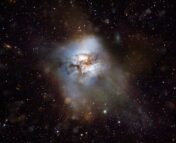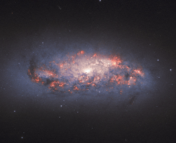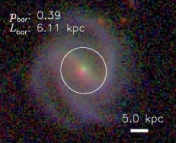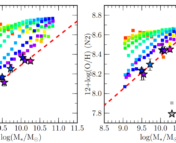Authors: Katherine E. Whitaker, Alexandra Pope, Ryan Cybulski, Caitlin M. Casey, Gergö Popping, and Min S. Yun
First Author’s Institution: Department of Physics, University of Connecticut
Status: Published in the Astrophysical Journal [open access]
Disclaimer: The author of this Astrobite works with Katherine Whitaker and Alexandra Pope, but was not involved in this research.
Approximately ten billion years ago, at what is known as “cosmic noon,” (at a redshift z~2.5), star formation was at an all time high, and the tightly packed galaxies of this era churned out dust from their population of bright young stars. Nowadays (z~0), the pace of galactic life has slowed down; galaxies in the nearby Universe are larger and have lower rates of star formation. Figure 1 illustrates how the star formation rates (the total mass of all newly-formed stars within a certain time period) and sizes of galaxies vary with redshift. Despite this dramatic evolution over cosmic time, the authors of today’s paper have found that some things never change… (or specifically, one thing related to dust and star formation).
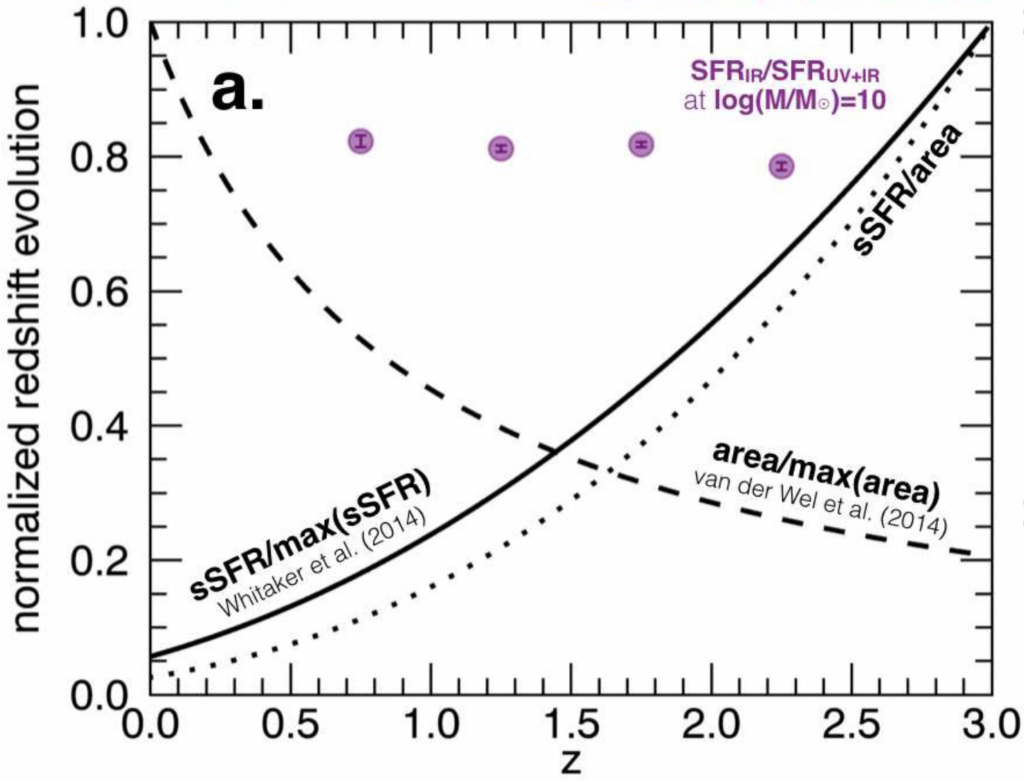
Dust can help us understand how galaxies change over time in a few key ways. By observing how dust evolves with redshift, we can get a better sense of how the underlying mechanisms that create and destroy dust (such as supernovae and the ejection of matter from red giant stars) change within galaxies. Also, because dust blocks some of the light that is produced by young stars and reprocesses it into longer wavelengths, we need to understand the dust contents of galaxies to get a full picture of their star formation.
Since galaxies in the nearby universe are dramatically different from galaxies ten billion years ago, you might think that the fraction of star formation that gets obscured by dust (the obscured fraction, or fobscured) should change over cosmic time. Surprisingly, for galaxies of a given stellar mass, this does not appear to be the case! By comparing the the obscured fraction, with stellar mass (Figure 2, left), the authors find that the obscured fraction strongly depends on stellar mass, but is independent of redshift. The authors also find that the obscured fraction is a function of star formation rates, and this relationship does depend on redshift (Figure 2, right). This redshift dependence is not surprising, because for galaxies of a given stellar mass, star formation rates increase with redshift up to cosmic noon. If we consider galaxies at a fixed the obscured fraction (imagine drawing a horizontal line on the right panel of Figure 2), we are effectively sampling galaxies with the same stellar mass.

What could explain the lack of evolution in obscuration for galaxies of a given stellar mass? Obscuration depends on several factors, including dust masses, the distribution of dust within galaxies, and the composition of the dust. Each of these factors could evolve in such a way that their net effect on obscuration cancels out. Alternatively, perhaps these dust properties do not undergo much change. Theoretical models of dust evolution and further studies of galaxies across a range of redshifts at far-IR and submillimeter wavelengths that probe their dust contents will hopefully unravel this puzzle.
Astrobite edited by Laila Linke and Roel Lefever
Featured image credit: ESA/Hubble & NASA, A. Seth

